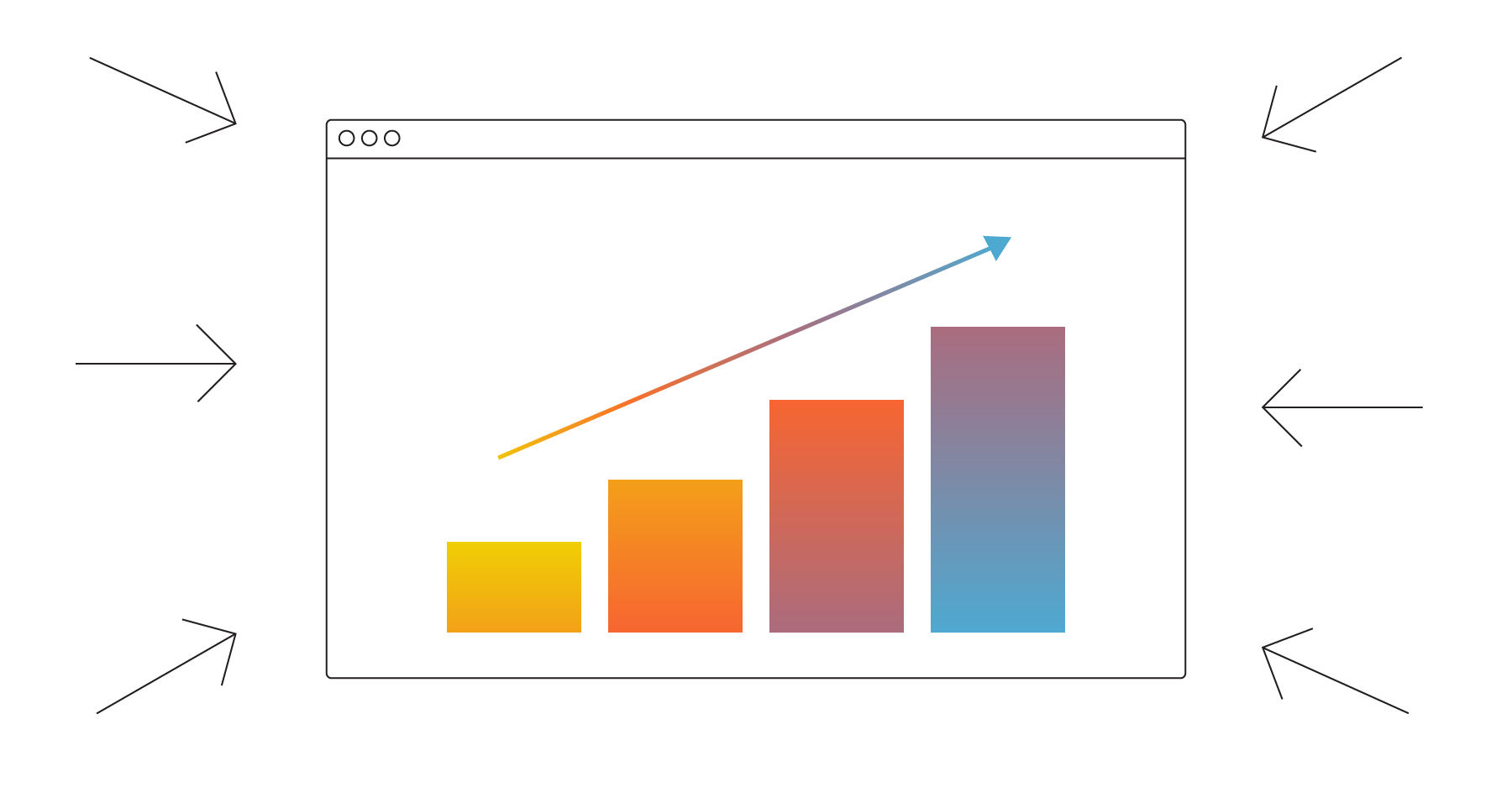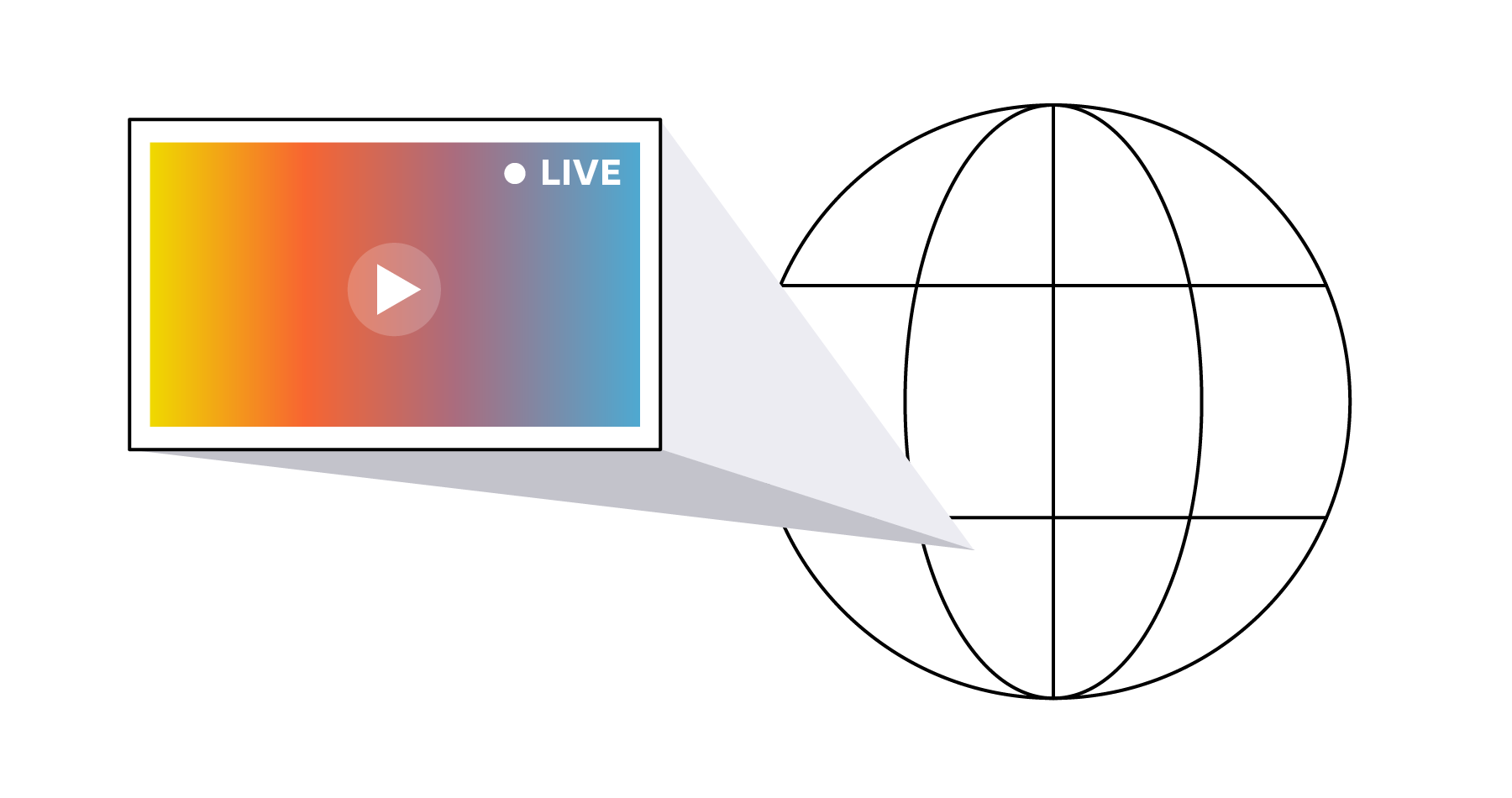Increasing OTT Engagement With Aggregated Video Analytics
Media

What’s the common ingredient that all streaming services share for building deeper relationships with viewers?
Highly engaged viewers.
However, OTT engagement requires much more than high quality video content delivered in a high-quality manner. Tailored recommendations are becoming the norm across digital experiences, and viewers have come to expect this wherever they consume content.
Tailoring content recommendations includes everything from crafting viewing lists that feel handpicked to delivering ads that match their interests. In short, it’s all about understanding and anticipating the viewer's preferences and habits and matching them with unique experiences.
At the heart of unique viewer experiences are rich analytics. When properly aggregated, video analytics allow you to analyze your audience and content and create strategies that foster better engagement.
Table of Contents
Analyze Audience Composition
Engagement Levels
Every OTT service has a variety of users with differing levels of audience engagement. These levels may not be the same for every service, but the following examples represent industry averages.
- New. These include viewers that have engaged with your content within the last week and for the first time in at least a year.
- Engaged. This audience shows consistent interaction. They’ll have multiple views in the last month, with none of them more than 28 days since the last view.
- Idle. These are viewers who have not engaged in the last four weeks but did have at least one interaction in the preceding eight weeks.
- Re-engaged. This segment includes viewers who have recently returned. They’re characterized by having watched content in the last week after not having done so for at least four weeks.
- Inactive/dormant/lost. This category includes viewers with varying levels of inactivity. Some haven’t viewed content in the last 12 weeks but had at least one view in the past year. Others haven’t engaged in over a year or have stopped viewing content on the platform altogether.
Categorizing viewers into OTT engagement levels is just the first step. You also need to track audience movement between the different levels over time.
For example, what are some of the key milestones and patterns that transition users from “New” to “Engaged” or “Idle” to “Re-engaged?” Analyzing and understanding these major transitions will help you develop targeted strategies to both retain current viewers and re-engage dormant ones.
Viewer Dimensions
Beyond engagement levels, there are several viewer dimensions that are worth tracking.
- Location. Viewer locations offer valuable insights into regional preferences and viewing habits in ways that may suggest a specific approach to content localization.
- Device/platform. Understanding whether your viewers prefer mobile devices, desktops, or CTVs can guide interface customization and optimization decisions as well as content formatting options.
- Tenure. Understanding how engagement patterns vary with subscription duration can help you optimize the approach to each. For example, what patterns among long-term subscribers should you look for in newcomers? Is there a way to encourage those patterns among newcomers to help them become long-term subscribers?
- Daypart. Tracking when viewers engage with content—whether it’s weekday prime time or weekend binges—can give insights into their lifestyle and viewing habits, both of which can be analyzed against engagement levels.
Not all viewer dimensions will affect OTT engagement, so it’s important to track them all and identify the ones that do and how.
For example, do you notice that certain regions are more inclined toward specific genres? Does the choice of device influence viewing frequency? Is there a notable change in users’ viewing schedule the more engaged they are with your video content?
Audience KPIs
Engagement levels and viewer dimensions add valuable depth to your audience composition, ensuring your Key Performance Indicators (KPIs) accurately reflect expected performance by cohort. And while there are several OTT KPIs important to service health, the following are the best for optimizing audience engagement.
- Conversion rate / weekly active viewers trendline. When it comes to viewing engagement, conversion rate measures the effectiveness of converting casual viewers into ongoing, consistent users. Tracking trends in weekly active viewers can indicate whether you have enough engaging content to keep users coming back regularly. For example, perhaps weekly users are more likely to be watching a series or are confident enough in your recommendations to regularly browse your platform.
- Weekly vs monthly active viewers. Comparing weekly active users to monthly active viewers can help you gauge the consistency of viewer engagement. Is your engagement spread evenly over time, or are there peaks and troughs in viewer activity? These KPIs can help you determine that, as well as identify the reasons behind the activity.
- Average minutes streamed trendline. This will help you better understand the depth of viewer engagement. Are there notable trends and patterns that offer insights into a large sudden increase or decrease? From there, you can investigate ways to better engage those with fewer minutes streamed.
- Average session volume trendline. This metric tracks the average number of sessions per viewer. For those who are returning more frequently, why? Are they binge-watching a season? Are they browsing their favorite genres, revisiting their wish list, or acting on recommendations?
Establishing a baseline for these KPIs is crucial. They’ll inform the approach that could impact various strategies for enhancing user engagement. Since user preferences evolve and shift, regularly monitoring them enables you to quickly identify any notable deviations.
Once your baseline is established, you’ll want to measure these against any milestone events or major changes in your service. This includes new releases, seasonal changes, platform updates, or other initiatives designed to enhance engagement.
Analyze Content Performance
Content Dimensions
Like audiences, video content has several unique dimensions that you should consider when measuring audience engagement and retention.
- Age. Breaking out content by new vs. old will help you answer questions about how the release date of content affects viewer interest. Do new releases see a strong surge? Or is it that older titles continue to engage audiences in ways that keep them coming back?
- Type. Understanding this characteristic will identify which content formats drive the most viewership. Do linear programs captivate more consistently? Are people tuning in primarily for live events? Or is video on demand (VOD) keeping your audience engaged most?
- Titles. Analyze which specific shows or movies are most effective for capturing viewer attention. Are there certain titles that consistently rank high in viewership over long periods of time? Are there any patterns for these high-ranking titles by audience segment?
- Genre. Similar to titles, genres can give you insights both into specific audiences, as well as viewers as a whole.
- Series. Use analytics to best understand viewer commitment to series, seasons, and entire franchises. Are viewers binge-watching entire series? Is there a drop-off in engagement with subsequent seasons, or does interest build as a series progresses?
Content dimensions demonstrate what resonates best with your audiences and why. With them, you can not only meet audience demands, you can anticipate them as you plan for future content strategies.
Catalog Dimensions
Applying categories to your content library not only adds valuable dimensions to your video analytics, it curates a better experience for your viewers.
- Popular titles. This category should feature content that is a major draw for your platform. Include titles that consistently attract large audiences and that will significantly contribute to overall viewership.
- Recent arrivals. Featuring new content in your catalog keeps it fresh and gives users a reason to check back often. You’ll find that it not only appeals to viewers’ desire for new experiences, but also gives you initial data about how well newly released titles resonate.
- Steady performers. These include your proven content titles that have shown to maintain steady viewership over time. They may not all be blockbusters, but they’ll serve as a consistent source of viewer engagement. You’ll find this to be especially true with genres, series, and themes that have loyal followings.
- False starts. This segment comprises content that initially seemed promising but didn’t maintain viewer interest. Analyzing these titles can provide insights into trends or themes that might not resonate with your audience as expected. These can be just as valuable for informing future content strategies as highly popular ones.
- Departing soon. These videos are great for creating a sense of urgency and re-engaging viewers who have been postponing watching these titles. For this section, be sure to note whether this urgency and FOMO significantly affects viewer behavior.
By organizing your catalog in these dimensions, your platform becomes easier to navigate and will better reflect your audience’s preferences and viewing patterns. It ensures every aspect of your catalog, from the latest arrivals to the timeless classics, is properly curated to engage, captivate, and retain your audience.
Post-Launch Dimensions
Another important dimension you’ll want to consider is how long audiences remain engaged after new content is launched. This will help you better understand engagement patterns for specific content and, if needed, refine future launch strategies.
One way to think about launch content is longtail vs. binge-worthy.
- Longtail. This content may not be as viral at launch, but it will consistently draw users over the long term.
- Binge-worthy. This content may drive a spike in interest and short-term engagement, but it lacks sustainability.
Both content types have their advantages in different use cases. The key is to identify the most engaging launch type for each.
For example, do full-season releases encourage binge watching, or do weekly releases sustain longer-term engagement? Does this vary by audience segment and/or genre?
Content KPIs
The most common video content KPI for measuring OTT engagement is completion rate (sometimes called retention rate or view-through rate). It gives you the average percentage of a video’s duration completed by a given audience, often benchmarked at larger intervals like 25%, 50%, 75%, etc.
However, averages aren’t the strongest measure of affinity. Most viewers love, hate, or feel indifferent about different content titles, and it’s that last one that can skew an average. Think about it: How can you increase audience engagement if your content KPIs are diluted by indifferent viewers?
Instead of completion rate, Brightcove offers an alternative KPI: our Attention Index. It’s calculated by contrasting the number of satisfied viewers (those who watch the entire video) against dissatisfied viewers (those who exit the video prematurely).
With Attention Index, you can easily pinpoint which specific pieces of content are captivating your audience the longest. By uncovering the depth of viewer engagement with different videos, it essentially becomes a lens through which overall audience preferences become clearer.
Beyond individual videos, you can also use the Attention Index to track across broader dimensions like genres, series, and channels to get a more comprehensive understanding of what is truly resonating with your audience.
Content Catalog Correlations
Some of the best engagement opportunities can be found by correlating audience and content dimensions. The possibilities here are endless, but the examples below can get you started.
- User-generated connections. The viewing patterns of your audience can offer insight into unexpected connections they’re making between different genres or titles. These can be valuable for viewer recommendations and potentially channel content.
- High value titles. A golden recipe for engagement and viewership is the combination of content with a high Attention Index and content with a large audience base. These will be your high value titles that consistently engage a large and broad spectrum of viewers.
- Hidden gems. Seek out content that, while currently having a smaller audience share, has proven to be highly entertaining based on viewer engagement metrics. These “hidden gems” are potential candidates for promotion to large, non-overlapping audiences.
- Dynamic duos. Some content may come together to create a unique pairing that leads to a higher shared Attention Index. For example, a popular science fiction series might pair well with a documentary on space exploration. Uncovering these “dynamic duos” will improve the user experience with better recommendations, increasing both viewership and engagement.
By analyzing the connections between different content types, genres, and titles, you’ll have the insights needed for strategic promotion, content recommendations, and a better user experience.
Use Audience and Content Insights to Increase Engagement
After a thorough analysis of your audience and video content, try applying these insights to your OTT service with the following strategies.
Improve Service Share with Tailored Playlists
Once you’ve identified your most promotable assets, you’re ready to create more compelling playlists. Curated playlists should showcase the breadth and quality of your offerings, guiding viewers to content that will resonate with them thereby increasing service share.
Present Relevant Content Choices
Leverage the insights from your dynamic duos and hidden gems analyses to optimize content recommendations. It’s an effective way to enhance the viewer’s experience by allowing them to discover content that might otherwise go unnoticed.
Optimize Content Launches for Engagement
Develop your content release strategies based on how the data has shown your audience prefers to engage. For example, if it shows a strong preference for binge watching, you can release an entire season at once. On the other hand, if the data shows that viewers consistently return to watch single episodes of an ongoing series, you’ll want to stagger the release in a weekly cadence.
Align Marketing Outreach with Daypart Viewing Data
Your daypart data can help you best understand how to time your marketing efforts for maximum impact. This approach will help you deliver the most effective messaging and help ensure that your high-priority promotions will reach your viewers at the optimal times.
Iterate and Measure
Optimization is an ongoing process. You should continuously measure the impact of these strategies and iterate based on the results. This ongoing cycle of optimization is key to delivering better viewing experiences in a landscape where user preferences and behaviors are constantly evolving.
Aggregate Your Video Analytics
The best strategies for increasing OTT engagement depend on aggregated video analytics. All of your audience, content, and service data must first be securely stored, harmonized, and visualized before you can begin analyzing it for insights. Unless you prefer the good old days of manual data pulls and dozens of spreadsheets.
At Brightcove, we recognize that yesterday’s methods can’t keep up with today’s OTT landscape. That’s why we offer Subscriber Insights, an advanced suite of video analytics tools designed to help our customers maximize revenue and customer retention.
Viewers have more streaming options than ever before. So whether you’re launching your first OTT platform or you already have an established service, cultivating a highly engaged audience is the only way to compete. And the only way to keep your audience more engaged than your competitors’ is through aggregated video analytics.


